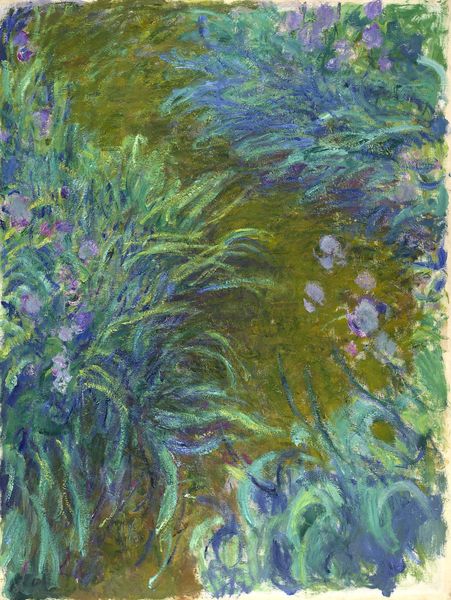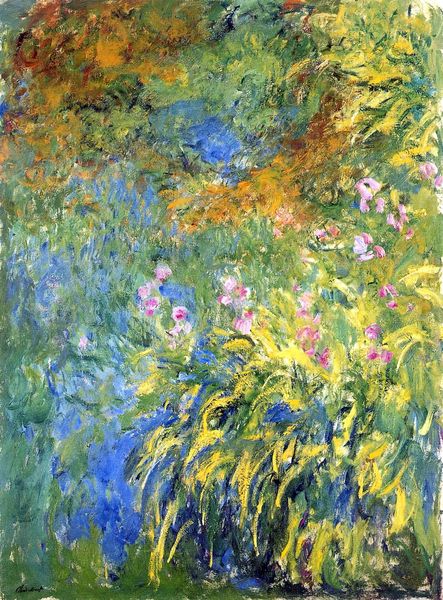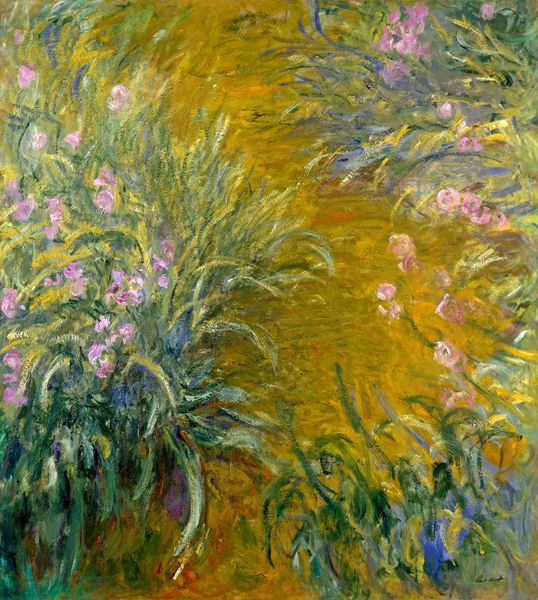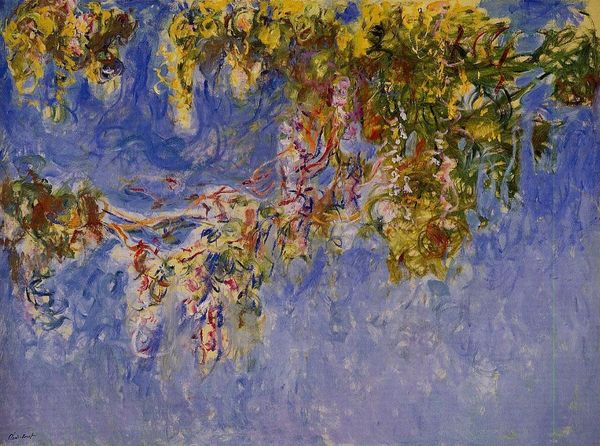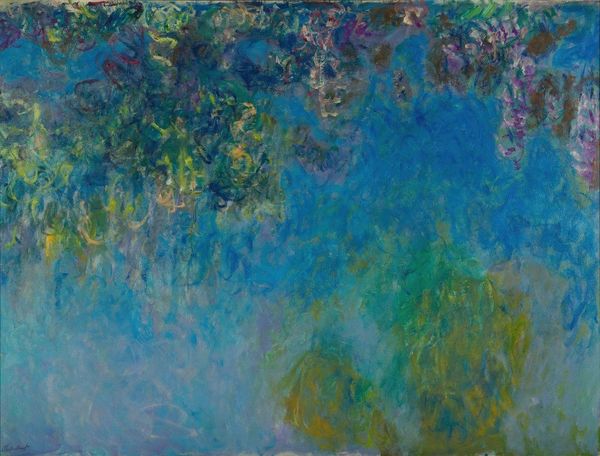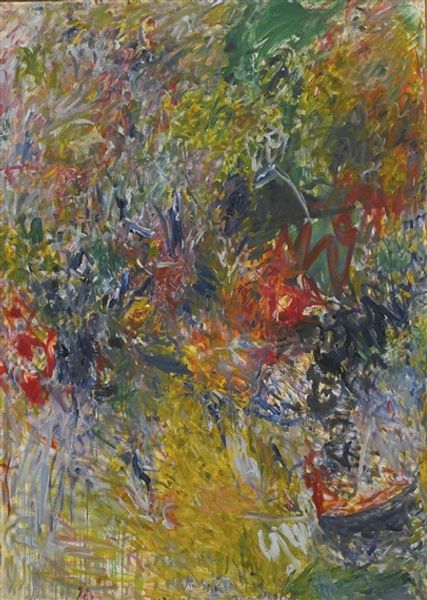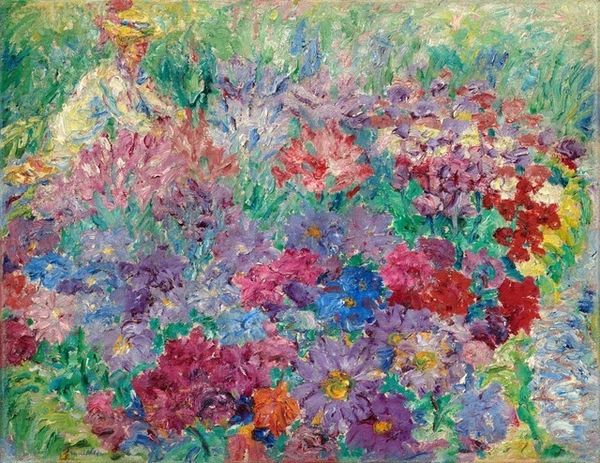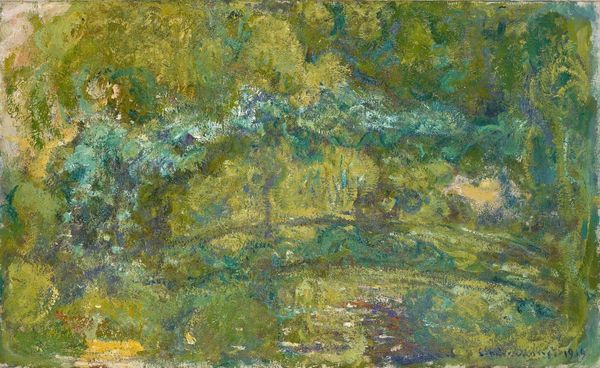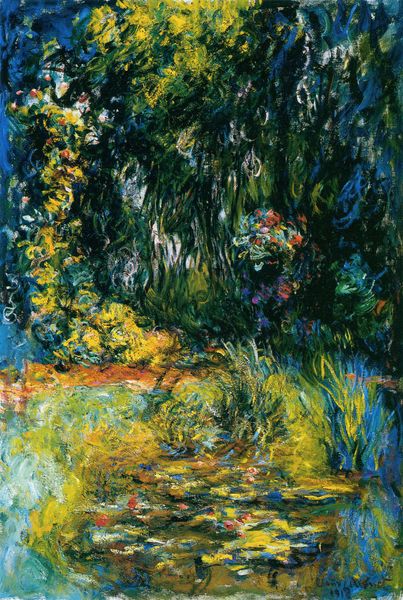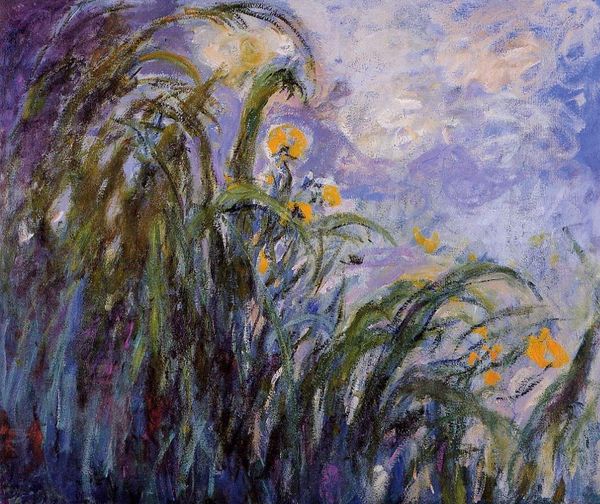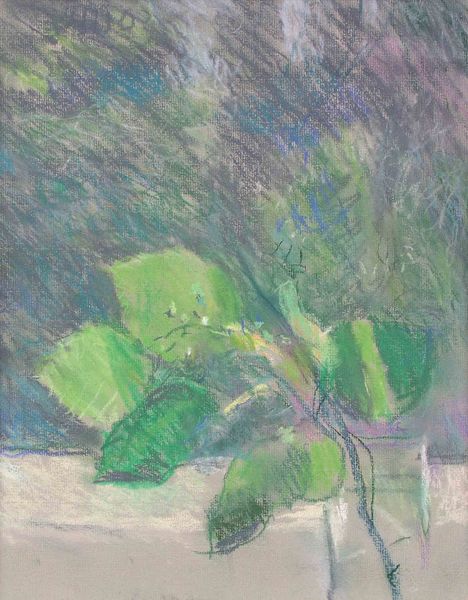
Copyright: Public Domain: Artvee
Curator: Looking at this work, I’m immediately struck by the sheer immersive quality of it. What is your initial reaction? Editor: I see a vibrant explosion of color, almost overwhelmingly floral and lush. It feels incredibly intimate, as though we’ve stumbled into a secret garden teeming with life. Curator: You're spot on. What we have here is Monet’s "Irises," created between 1914 and 1917. It’s an oil-on-canvas work from his later years, painted in his garden at Giverny. Monet began focusing intensely on his garden as a subject after 1900, and this is part of a broader series. It shows the societal embrace of the private garden as both subject and retreat, away from industrial progress and war. Editor: It is quite interesting that it was done during World War I, because the focus on the serene beauty of nature feels almost like an act of resistance or a quiet rebellion against the anxieties and devastation of that era. Do you think he was intentionally creating a haven, not only for himself but also for viewers? Curator: Undeniably. These late-period works are steeped in Monet’s growing recognition and authority. As an established figure, his work serves to popularize personal sanctuaries and an escape through idealized nature. There’s an entire industry that developed around Giverny precisely to disseminate this bourgeois idyll, turning a truly avant-garde artistic vision into very saleable subject matter. Editor: It definitely raises questions about access. Who gets to cultivate these havens? The thick impasto and almost dissolving forms of these late works also feels significant; maybe it signifies how our connection to nature is becoming more abstract, available mainly as a surface appearance divorced from lived reality. Is it possible that this type of Impressionistic landscape further contributed to distancing people from the realities of natural spaces? Curator: That's an astute and relevant point. By aestheticizing nature, it's tempting to separate its beauty from the very real socio-political challenges it faces. The presentation of nature as simply “beautiful” risks overlooking complex ethical, economic, and political considerations in maintaining these types of garden spaces, while also considering the cultural impacts on the development of post-impressionism itself. Editor: Ultimately, I think viewing "Irises" invites us to engage in more complex discussions around representation, privilege, and ecological awareness. Curator: Indeed. Seeing "Irises" this way definitely illuminates it anew.
Comments
No comments
Be the first to comment and join the conversation on the ultimate creative platform.
